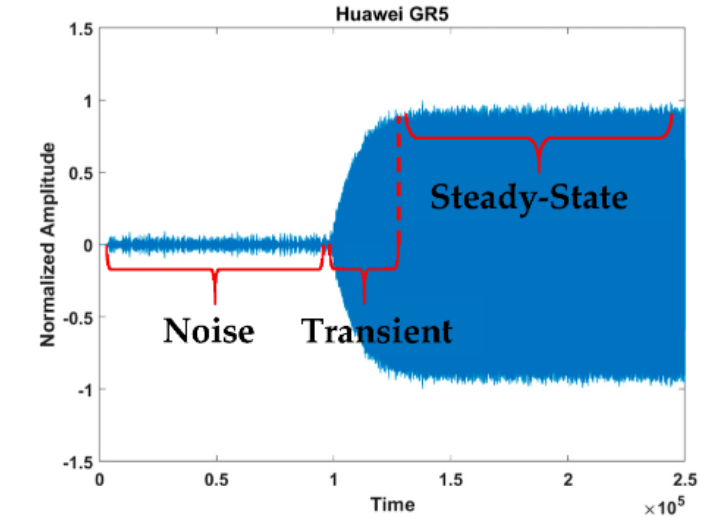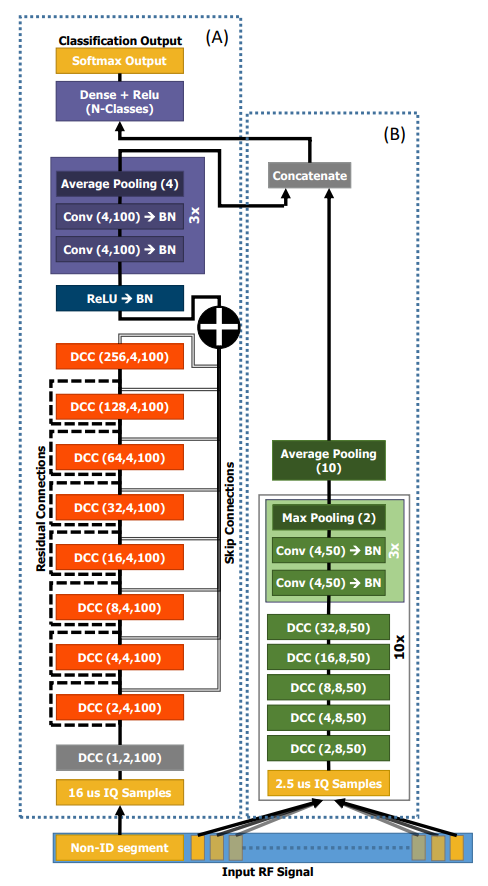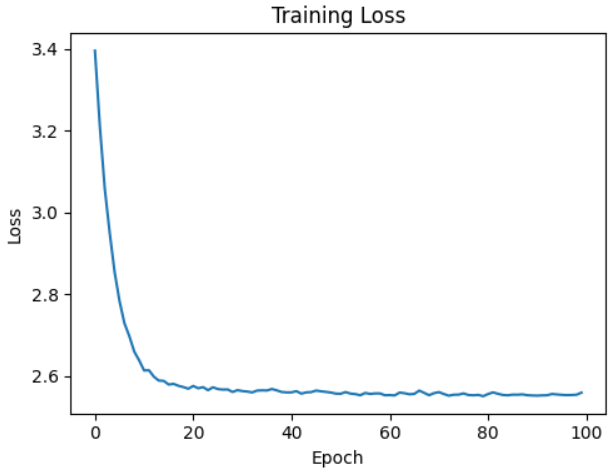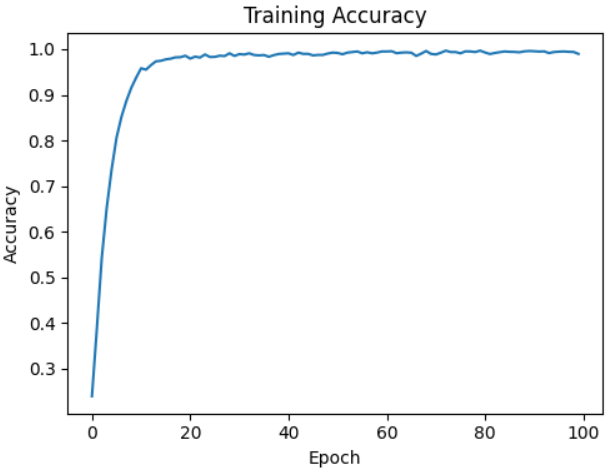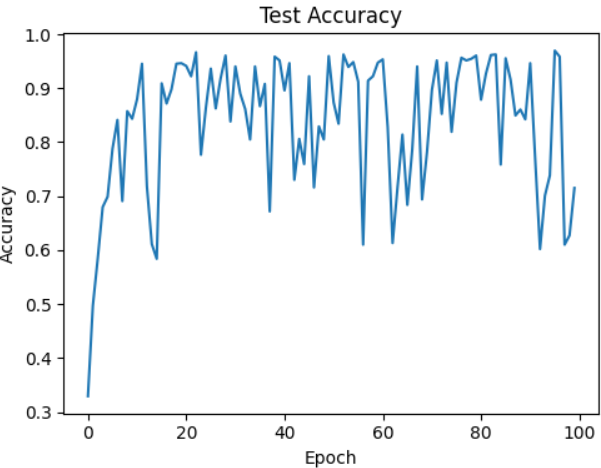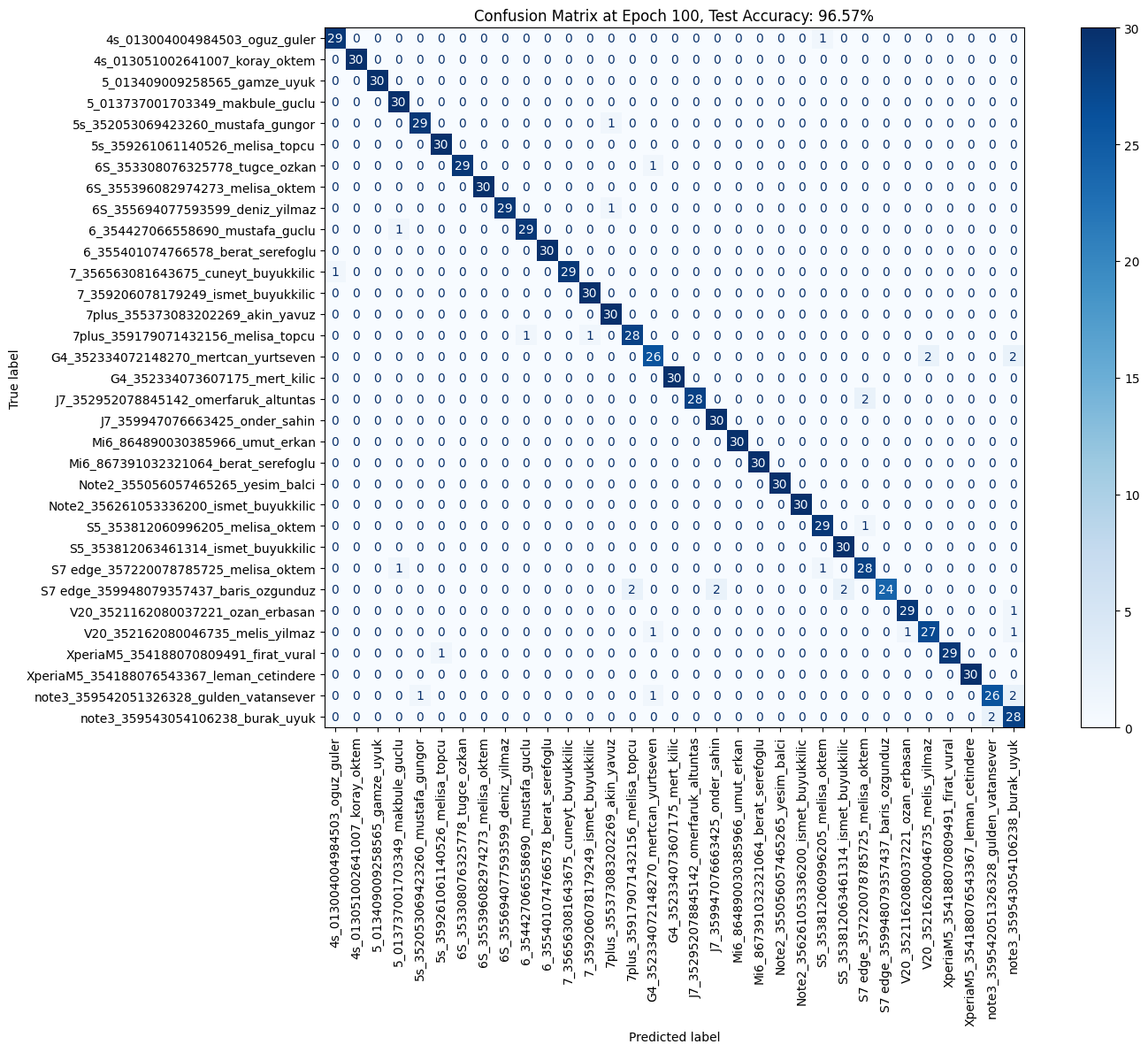Device Identification Based on Radio Signals Using Deep Metric Learning
Contents
1. Introduction
Radio Frequency Fingerprinting (RFF) is a technique for identifying radio devices based on unique characteristics (fingerprints) generated by hardware imperfections during RF signal transmission.
- Each device (WiFi, IoT, phones, drones, etc.) inherently has small unavoidable errors in circuits (oscillator, PA, DAC…) when transmitting.
- These imperfections create a distinct electromagnetic “fingerprint.”
- By extracting these features from received signals (e.g., IQ imbalance, phase noise, transient, spectral features…), devices can be identified and distinguished even when using the same communication standard and MAC/IP address.
Main applications of RFF
- Wireless network security: detect impersonation, prevent spoofing.
- IoT: lightweight device identification and authentication without heavy protocols.
- Military & Drones: distinguish unmanned aerial vehicles.
2. Related Work
Transient Signal Identification
Studies show that the transient stage in radio signals (between noise and steady state) contains key features for device identification. Precisely detecting the transient boundary is crucial to avoid errors affecting feature extraction and training.
Common detection methods:
- Bayesian change point detection: based on fractal dimension changes.
- Phase-Based detection: based on linear phase variations during the transient stage.
Machine Learning and Deep Learning Applications
Once the transient signal is extracted, supervised machine learning models like SVM perform well but heavily rely on accurate transient segmentation.
To overcome this, deep learning (CNN, LSTM) leverages the full signal, reducing dependence on transient detection and improving accuracy. Recent models such as RiftNet have been applied to identify devices from smartphone Bluetooth signals.
3. Method
Signal Classification with Machine Learning
Instantaneous Phase Features
- Based on transient-based RF fingerprinting.
- Extract high-order statistical features: skewness, kurtosis, variance from:
- Instantaneous amplitude
- Instantaneous frequency
- Instantaneous phase
- These features reflect micro hardware imperfections, creating a unique “fingerprint” for each device.
TFED Features
- Use Hilbert-Huang transform to analyze signals in the time-frequency domain.
- Extract feature groups:
- Transient Signal (e.g., duration, energy, phase entropy)
- Envelope (e.g., energy, envelope variance)
- TFED-Time (e.g., slope, variance, energy peak distribution)
- TFED-Frequency (e.g., peaks, energy variance)
- Limitation: requires manual extraction, depends on accurate transient detection, and can lose information at low sampling rates.
Signal Classification with RiftNet
- RiftNet has two branches:
- Branch (A): processes long segments (~16 μs).
- Branch (B): processes short segments (~2.5 μs).
- Both use Dilated Convolutional Cells (DCC) with different dilation rates to extract multi-scale temporal information.
- Intermediate outputs are combined with skip connections and fed into the classification layer.
- Advantage: effectively captures RF features, reduces reliance on manual feature extraction.
Metric Learning and Open Set Problem
- After training RiftNet, the softmax layer is removed.
- Apply metric learning with contrastive loss, train for 20 additional epochs.
- Extract latent vectors of known users and index them using FAISS for querying and evaluation.
- A threshold of 1.0 (Euclidean distance) in the embedding space separates known from unknown users.
4. Experiment
Dataset
- Public dataset from Uzundurukan et al. (2020), published in Data, MDPI, titled “A Database for the Radio Frequency Fingerprinting of Bluetooth Devices.”
- Paper link: https://www.mdpi.com/2306-5729/5/2/55
- Dataset link: https://doi.org/10.5281/zenodo.3876140
- Bluetooth (BT) signals, sampling rate 250 Msps.
- 13 devices from 5 brands, ~1950 recordings from 33 phones.
- Data split: 80% train – 20% test.
Device list: iPhone 4s, 5, 5s, 6, 6s, 7, 7 Plus, LG G4, Samsung Note 2, Note 3, S3, J7, Xiaomi Mi 6.
Machine Learning Classification
- Models: SVM, LDA, Decision Tree, Random Forest, XGBoost, CatBoost, Gradient Boosting.
- Libraries:
scikit-learn,XGBoost,CatBoost. - Default hyperparameters.
- Training and evaluation on the same dataset.
RiftNet Classification
- Trained for 100 epochs.
- Optimizer: Adam, learning rate =
1e-4. - Loss function: cross-entropy.
5. Result
Machine Learning Classification
- Instantaneous features:
- SVM: 67.42% (train), 42.22% (test) → low effectiveness.
- TFED features:
- LDA: 73.64% (train) / 72.93% (test)
- Decision Tree: 100% / 56.57%
- Random Forest: 100% / 69.19%
- XGBoost: 100% / 70.61%
- CatBoost: 99.12% / 72.12%
- Gradient Boosting: 99.55% / 65.35%
👉 Results show overfitting: high training accuracy but large drop on test data. Main reason: difficulty in accurately detecting transient stage, making manual features (instantaneous, TFED) insufficient.
RiftNet Classification
- Model converges quickly and stably: loss drops sharply in early epochs.
- Performance improves steadily on both train and test.
- Best result at epoch 96:
- Train accuracy: 99.4%
- Test accuracy: 96.57%
- Slight test fluctuations due to small and limited diversity in test data, causing potential distribution shift.
👉 RiftNet outperforms traditional machine learning models, demonstrating deep learning’s power in RFF identification.
Metric Learning in Open Set
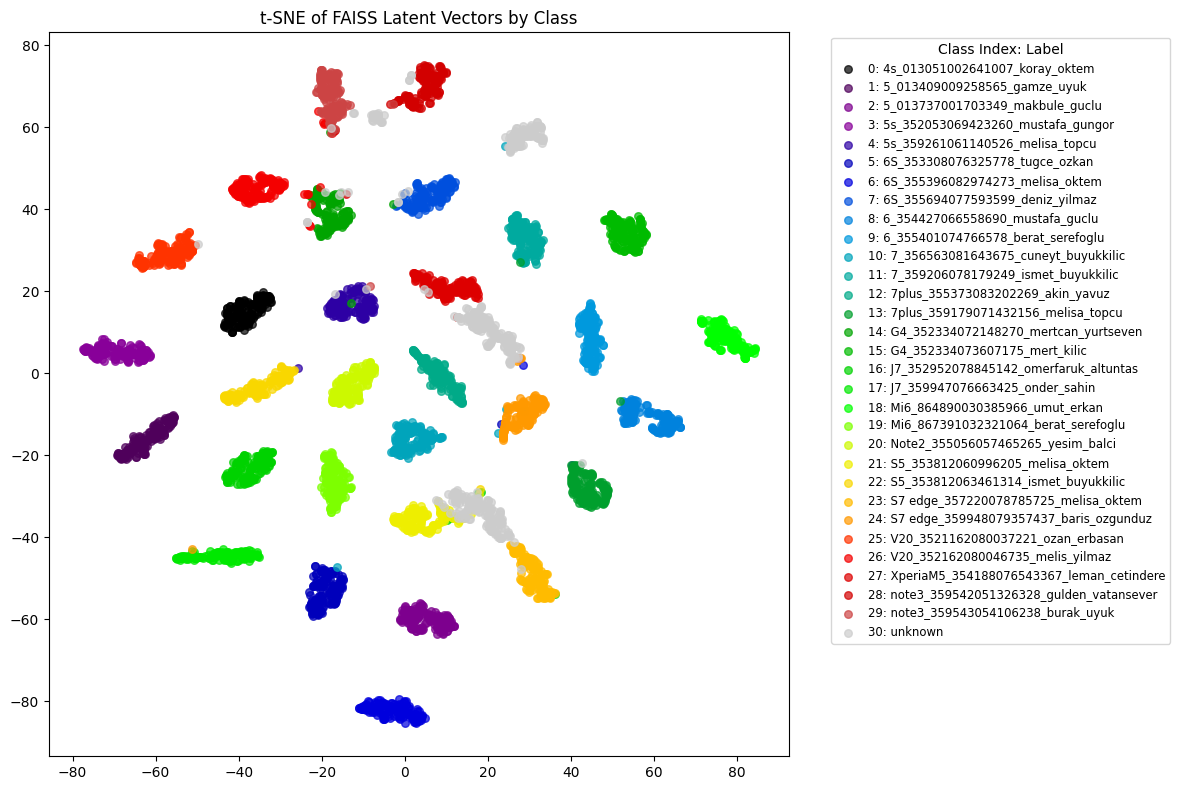 Latent vectors clustered using t-SNE plot
Latent vectors clustered using t-SNE plot
- After metric learning, the latent space forms clear clusters corresponding to known users.
- Devices of the same class group tightly.
- Different classes are well separated.
- Previously unseen devices appear as outliers, easily identifiable.
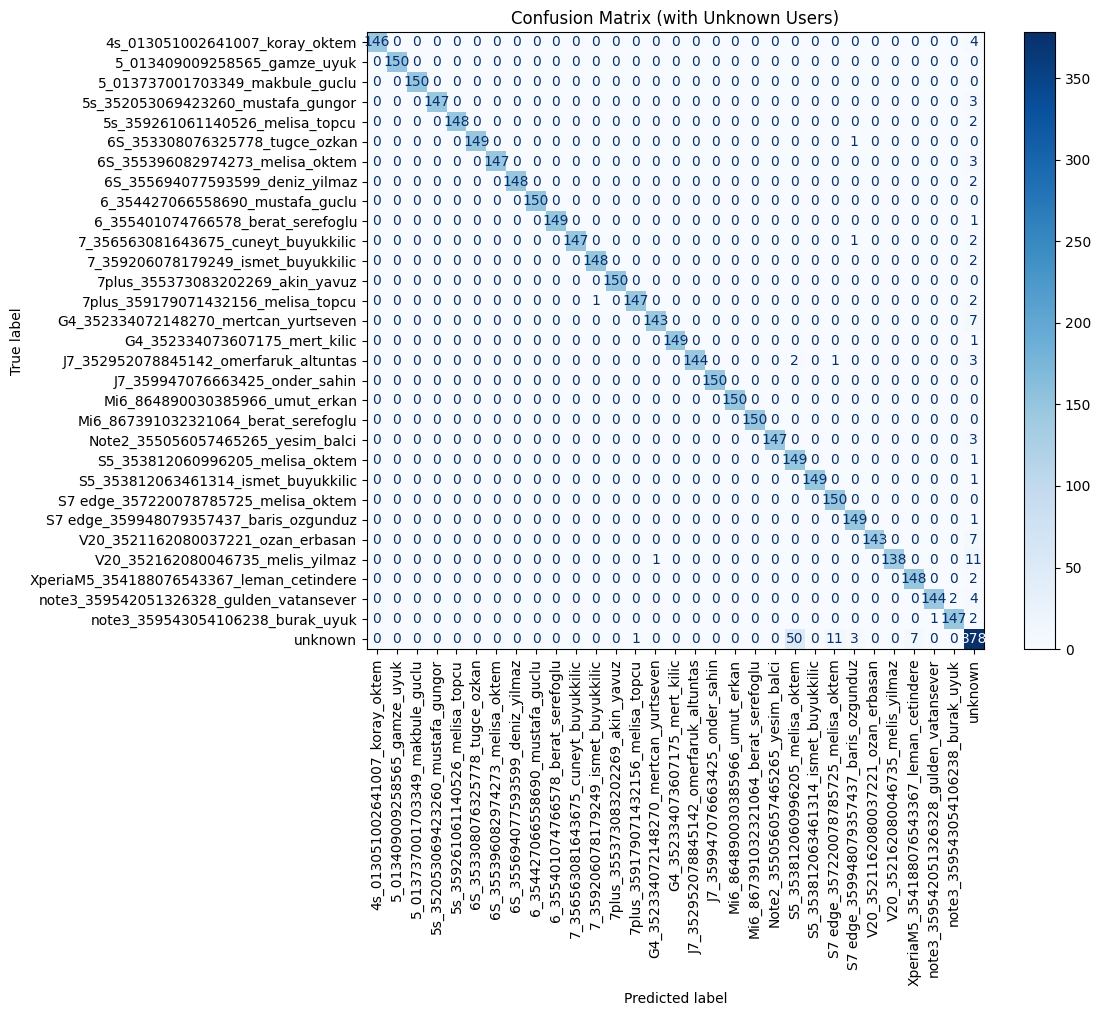 Open-set problem on test set (with unknown users)
Open-set problem on test set (with unknown users)
- Tested on mixed dataset (known + unknown devices):
- Confusion matrix shows accurate and stable predictions for known classes.
- Some misclassifications mainly occur with unknown class, normal for open-set.
- With 1.0 threshold (Euclidean distance), system achieves 97.05% accuracy in separating known/unknown.
👉 Results prove RiftNet with metric learning has high generalization and strong potential for device authentication using RF signals in open-set scenarios.
Paper published in APSIPA ASC 2025, check here.
Code used in the study is available in this repository, check here.


